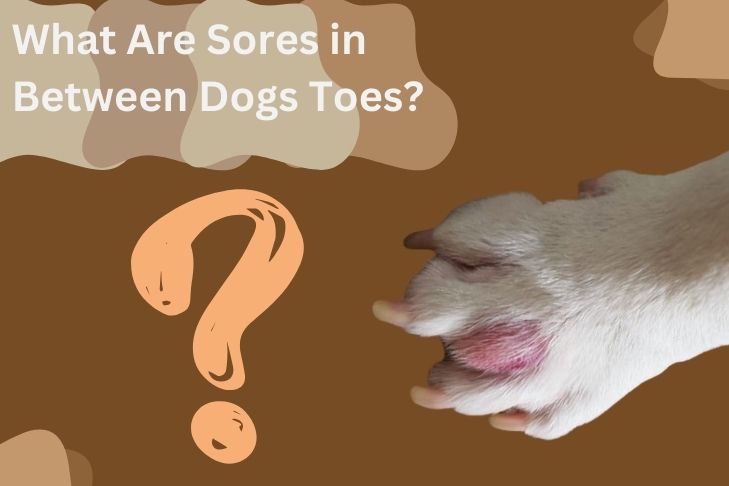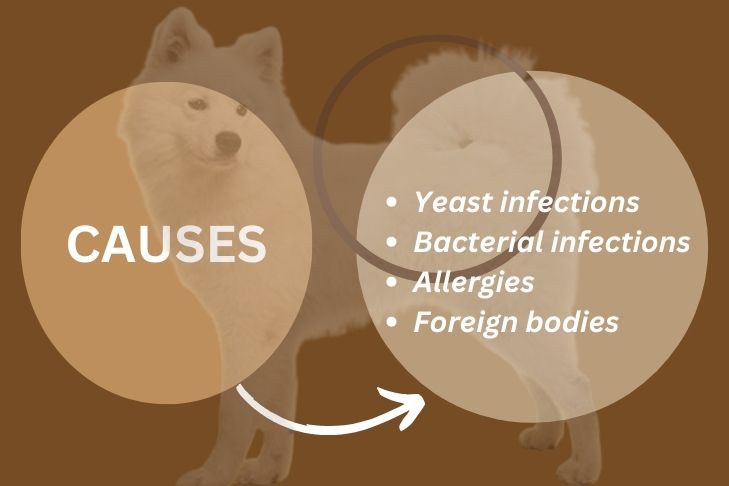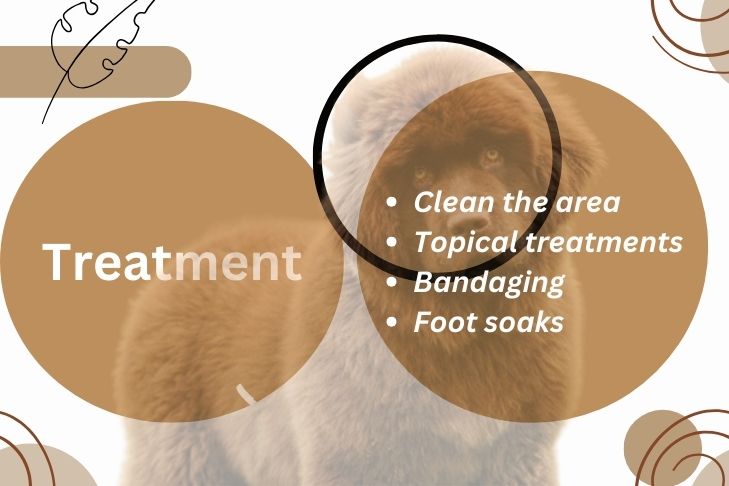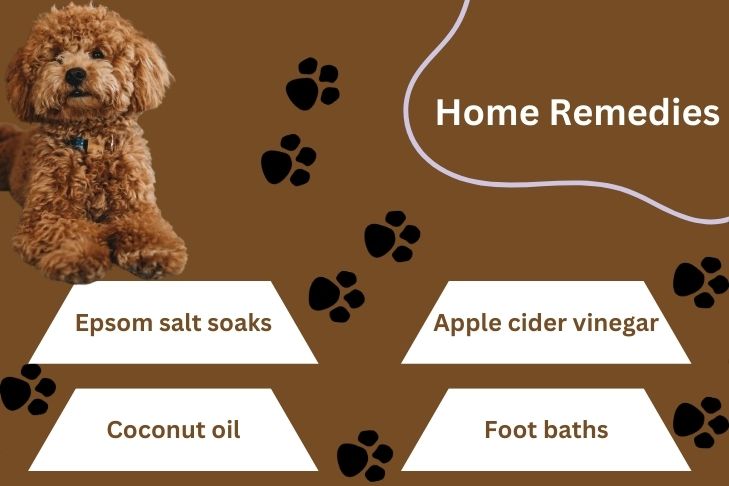All dog lovers find walking around the streets with their pup friends alluring. But what if your dog has difficulty walking? Well, it can be due to a sore in their toes.
As a dog owner, noticing sores in between your dog toes can be alarming. These sores, often called interdigital cysts or furuncles, can cause significant discomfort for your canine.
In this blog, we’ll explore the causes, symptoms, and treatments for these pesky sores, answering common questions.
So, let’s dig in!
What Are Sores in Between Dogs Toes?

Sores in between dogs toes, also known as interdigital cysts, are typically inflammatory lesions that can occur between your chunky dog toes.
They can appear as red, swollen, and sometimes oozing bumps. These sores can be caused by a variety of factors, including bacterial or fungal infections, foreign bodies lodged in the skin, allergies, or even genetic predisposition.
Why Do Sores in Between Your Dog’s Toes?

Scabs or sores between your dog’s toes can result from several underlying issues. Common causes include:
- Yeast infections: Dogs with a yeast infection often experience itching and sores in between their toes.
- Bacterial infections: Bacteria can invade the skin through small cuts or abrasions, leading to infection and scabbing.
- Allergies: Environmental allergens, food allergies, or contact dermatitis can cause itching and subsequent scabbing.
- Foreign bodies: Splinters, grass seeds, or other debris can become lodged between the toes, causing irritation and sores.
Must Read: Seborrhea Dog Symptoms
How Do You Treat Sores in Between Dogs Toes?

Treatment for sores in between dogs toes depends on the underlying cause. Let’s take a look at some simple things you can do:
- Clean the area: Make sure you regularly clean the affected area with some antiseptic solutions to ensure no more infections are caused.
- Topical treatments: Apply a veterinarian-recommended topical antibiotic or antifungal cream to help reduce infection and inflammation in your giant furry dog.
- Bandaging: If the sore is severe, bandaging the paw can protect it from further irritation and contamination.
- Foot soaks: Soaking your dog’s paw in an Epsom salt solution can help reduce swelling and draw out infection.
- Prevent licking: Use an Elizabethan collar (cone) to prevent your chunky dog from licking the affected area, which can exacerbate the problem.
Treat Interdigital Furuncles in Dogs: 4 Useful Tips
Interdigital furuncles, a specific type of sore, require particular attention. Treatment typically involves:
- Veterinary examination: A vet will need to diagnose the condition accurately, as it can sometimes be mistaken for other issues.
- Antibiotics: A course of oral antibiotics is often necessary to combat the infection.
- Antiseptic soaks: Regular antiseptic foot soaks for your big white dog toes can help keep the area clean and promote healing.
- Surgical intervention: In severe cases, surgical removal of the cyst may be required.
Interdigital cysts can sometimes resolve on their own with proper care and hygiene. However, persistent or recurrent cysts often need veterinary intervention to prevent complications.
Home Remedies for Sores in Between Dogs Toes

Let’s check some interesting yet useful home remedies to make your canine’s experience of first-aid at home best:
Sores in Between Dog Toes Home Treatment
For mild cases, home remedies can be effective:
- Epsom salt soaks: Soak your dog’s paw in warm water with Epsom salts to reduce swelling and draw out infections.
- Apple cider vinegar: It is a natural antiseptic solution, so it can be used, but ensure that you are gently doing it.
- Coconut oil: Coconut oil has natural antibacterial properties and also helps in calming soreness.
- Foot baths: Regular foot baths for your large furry dog with a mild antiseptic solution can help keep the area clean and promote healing.
Learn about the impact of cottonseed oil on dogs here.
Dog Paws Red Between Toes Home Remedies
Redness between your dog’s toes often indicates inflammation or infection. Home remedies to alleviate this include:
- Aloe vera gel: Apply aloe vera gel to soothe and heal the skin.
- Calendula cream: Calendula has natural anti-inflammatory properties and can aid in healing.
- Chamomile tea soaks: Soaking the paw in chamomile tea can provide relief due to its soothing properties.
Identifying and Preventing Sores in Between Dogs Toes

Not just the home remedies could work, but the identification and prevention can also help:
Pictures of Sores in Between Dogs Toes
Visual identification is crucial. Look for images online or consult with your vet for pictures of sores in between dogs’ toes. This can help you understand the severity and type of sore you’re dealing with.
Pictures of Interdigital Cysts in Dogs
Similarly, looking at pictures of interdigital cysts in dogs can help you recognize this specific condition.
Yeast Infection Between Dogs Toes
Yeast infections are a common cause of itchy sores in between dogs’ toes. They usually experience symptoms like redness, swelling, etc. Treatment typically involves antifungal medications and regular cleaning of the affected area.
Conclusion
Sores in between dogs toes can be a painful and frustrating issue for both you and your dog. Understanding the causes, symptoms, and treatments can help you provide the best care possible.
If you notice persistent or severe sores, consult your veterinarian for a thorough examination and tailored treatment plan. Remember, early intervention is key to ensuring your chunky dog’s comfort and health.




